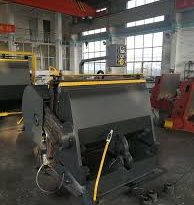Revolutionizing Precision Cutting: The Evolution of Die-Cutting Machinery
Die-cutting machinery is a staple in various industries, from packaging and printing to textiles and electronics. These machines use sharp steel dies to cut, shape, or perforate materials into specific designs, providing a high level of precision that manual processes cannot achieve. This article explores the advancements and significance of die-cutting machinery, highlighting how it has transformed manufacturing processes and what it promises for the future.
Technological Advancements in Die-Cutting Machinery
Recent innovations in die-cutting machinery have significantly enhanced its efficiency, accuracy, and versatility. Modern die-cutters are equipped with sophisticated digital controls that allow for precise adjustments and automation. These machines often incorporate CNC (Computer Numerical Control) technology, enabling them to execute complex cuts with extreme accuracy and minimal waste. Additionally, the integration of laser cutting technology has expanded the capabilities of die-cutting machines, allowing them to handle a wider range of materials and intricate patterns.
The Role of Automation
Automation in die-cutting machinery has led to substantial improvements in production speed and consistency. Automated die-cutters reduce the need for manual setup and adjustment, facilitating quicker changeovers and continuous operation. This automation not only speeds up the manufacturing process but also enhances product consistency, crucial for industries where precision is paramount, such as in medical device manufacturing or high-quality packaging.
Impact on Production Efficiency
Die-cutting machinery significantly impacts production efficiency by streamlining the cutting process. It reduces labor costs and material wastage, allowing manufacturers to optimize their resource usage. The high speed and precision of these machines also increase throughput, enabling businesses to meet large orders and tight deadlines more effectively.
Sustainability and Environmental Impact
As environmental concerns become more prominent, die-cutting machinery is adapting to be more sustainable. Many modern die-cutting machines are designed to be energy-efficient and are capable of recycling scrap material. This not only helps manufacturers reduce their environmental footprint but also decreases the cost of materials by reusing waste products in a productive manner.
Future Trends and Industry Implications
The future of die-cutting machinery looks towards even greater automation, precision, and flexibility. The use of AI and machine learning is expected to further enhance the capabilities of die-cutters, enabling predictive maintenance and real-time optimization of cutting parameters. Furthermore, the development of hybrid machines that combine die-cutting with other processes like printing or embossing will likely open new avenues for innovative products and applications.
Conclusion
Die-cutting machinery continues to play a crucial role in modern manufacturing, driven by technological advancements and the demand for high-precision components. As the technology evolves, it will further enable industries to improve efficiency, reduce waste, and produce complex designs that meet exacting standards. The ongoing innovation in die-cutting technology not only supports current manufacturing needs but also paves the way for future developments in industrial production.



